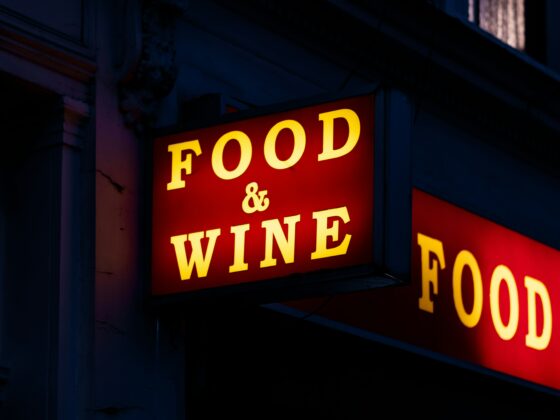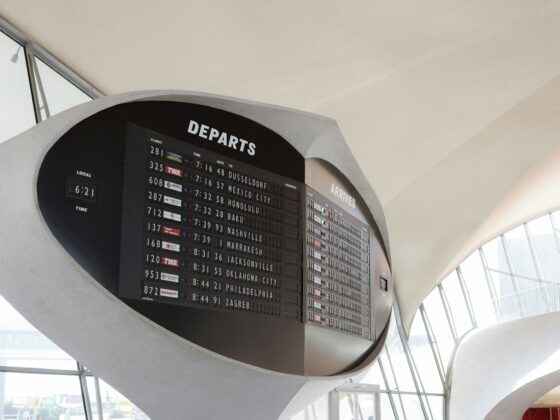
Hotel food and beverage isn’t simply a service line—it’s the second-largest revenue engine in the building (1) and, increasingly, the brand’s cultural calling card.
Coming out of the pandemic, the economics and expectations surrounding hotel dining and beverage consumption shifted significantly. On one hand, industry P&Ls show that food and beverage (F&B) remains the largest contributor outside of rooms—roughly one-third of total hotel revenue on average—at luxury and upscale properties (2). Guests, especially affluent travelers, value unique on-property dining and beverage experiences more than ever. On the other hand, inflation and an evolving mix of customer demands continue to introduce real cost pressure and complexity.
Across a large sample of full-service U.S. hotels, 2024 F&B revenue remains at about 81 percent of 2019 levels after adjusting for inflation—a reminder that “normal” hasn’t fully returned and that in many cases, legacy restaurant footprints and offerings often fail to address current demands. Still, there are bright spots: resort and luxury properties, in particular, have experienced F&B growth per occupied room even as broader hotel performance plateaus. Meanwhile, banquet and catering have been resilient in leisure-led and resort settings.
At the same time, F&B labor has become the leading driver of hotel labor-cost growth—up nearly 15 percent in 2024—compounding margin pressure and underscoring the need for greater innovation, smarter operating models, and real estate that’s programmed to work harder across dayparts.
So how can hotel bar and restaurant real estate work harder, and produce greater benefits, for owners, asset managers and brands?
Our thesis is simple: Hotel F&B reaches its full potential when the hotel’s bars and restaurants are treated as a focused portfolio of revenue-producing micro-venues, curating each square foot to a specific guest journey, daypart, and profit profile. That often requires the reimagining of existing space and collaborating with distinctive restaurateurs and beverage teams who bring regional and national reputations, stimulate local demand, and inject operating discipline into F&B strategy.
Toward an F&B Stack with a Point of View
For luxury and upper-upscale assets, the playbook is shifting from “one signature restaurant plus a lobby bar” to a layered stack of thoughtfully curated, culturally relevant restaurant concepts that, when carefully placed, both maximize revenues and increase guest satisfaction.
While there are many variants that can leverage a property’s footprint, revenue mix and marketplace positioning, a sample of on-property food and beverage stacking can include:
- The signature destination dining experience that carries the property’s story—often anchored by a high-profile chef or restaurateur to drive non-guest traffic, earned media, and a premium check average. In addition to driving signature dining experiences, the halo effect from prestige chef and/or restaurateur partnerships helps properties command rates and strengthens brand perception well beyond the dining room.
- The all-day market/café with strong merchandising to capture breakfast and grab-and-go—flexing to afternoon co-working and evening wine education or tasting formats.
- A high-margin bar/lounge program, which is intentionally welcoming to both guests and locals, serves to convert limited lobby circulation into new revenue and a buzzy destination (seating arrangements which encourage small group gatherings, lighting that enhances the guests’ presence, aperitifs, low-ABV, and experiential programming such as an artist quietly working on a painting).
- Event-ready private dining and banquet-adjacent spaces that blur the line between social and group business—important as banquet trends diverge by asset type.
- Rooftops, terraces, and other common areas programmed for day-into-night transitions and premium experiences—where the four-wall economics justify incremental capex.
What’s new is not the components; it’s the precision employed in structuring them and the creativity required to bring them together in a manner that clearly expresses the hotel’s distinct point of view.
When every outlet has a target guest, daypart, seat-turn profile, and capture ratio, owners can right-size back-of-house and labor—and measure success by F&B RevPAR/RevPOR and four-wall EBITDA, not just covers.
Differentiating Your Hotel in a “Sea of Sameness”
When I began my work in the hotel industry – more than 25 years ago – hotels differentiated themselves primarily on the basis of price, points, and location.
Then came technology differentiators – choose our hotel because we have the best high-speed internet access, in-room iPads to improve the TV, order room service, raise or lower the curtains. Then the battle of in-room amenities – hotels offered new high thread count bedding, oatmeal soaps, curved shower rods and the like, to separate themselves from the competition.
Today, nearly all upscale hotels have similar in-room offerings and amenity packages. High-speed internet is a given, and everyone offers loyalty points.
With some 1,200 plus brands competing for travelers’ business, according to a recent report, it is becoming harder and harder to differentiate upscale and luxury hotels from competitors in key markets.
A set of purposeful, thoughtfully curated food and beverage offerings that together express a hotel’s distinct point of view can hold the key.
Wind Creek Hospitality: Translating Vision into ROI
Colicchio Consulting’s recent engagement with Wind Creek Hospitality illustrates the approach in action.
Tasked with reimagining the food-and-beverage program at the Wind Creek Chicago Southland Casino & Resort, we envisioned a multi-outlet lineup—headlined by the popular Chicago-based chef Fabio Viviani’s Alto Italian Steakhouse—designed to broaden daypart coverage, engage the local market, and establish a distinct culinary identity for the property.
Chef Viviani’s engagement with the Wind Creek Chicago Southland extended to three additional food and beverage outlets, each with its own distinct menu and theme. These include the “Shuck It” Oyster Bar, “The Spot” American Diner, and “Food Bazaar,” a modern reimagining of the traditional casino buffet comprising six unique venues in one space.
Both Wind Creek’s leadership team and Colicchio Consulting agreed that the process of defining a “point of view” must be data-driven: identify the right concepts, secure the right talent, and enlist the right operating partners to make each venue economically self-sufficient, then allow that “halo” to lift the larger asset.
This is the broader point: chef and restaurateur partnerships must not vanity be projects; they must be conceived and underwritten as tools of calculated differentiation and as brand accelerators. The right chef’s brand equity accelerates ramp-up, increases the probability of local capture, and earns immediate mindshare in crowded food cities—benefits that can justify licensing structures, minimums, or performance-based economics if negotiated correctly. The result is a property whose F&B is both talked about and bankable.
Wind Creek Chicago Southland is already reaping the benefits.
Leveraging the box you already own
Owners often ask, “Where do I find the square footage?”
In our experience, most properties already have it— from under-performing lobby zones, oversized banquet prefunction areas, long underutilized corridors, legacy business centers, and terraces that are sometimes only episodically used.
The opportunity is to convert “nice-to-have” square feet into activated, revenue-producing space. Some ideas for doing so:
- Cut through the box: Carve a compact pastry/coffee bar out of lobby real estate with sightlines that pull traffic; add a pastry commissary that also supplies in-room and banquet.
- Daypart flips: Design fixtures and smallwares to flip an all-day café into an intimate aperitivo bar without a second shift’s worth of labor.
- Banquet adjacency: Insert 20–40 seat private dining rooms adjacent to event kitchens to flex between social, corporate, and overflow à la carte.
- Outdoor capital: Roof, terrace and even back alley upgrades with partial weatherization (shading, wind control, radiant heat) can add 8–10 months of premium covers in many markets.
Each transition is rooted in four-wall math: revenue per square foot by daypart, expected seat turns, contribution margin by menu mix, and a labor model calibrated to current wage realities—realities that have shifted materially, with F&B departments driving the steepest labor-cost increases.
From Post-Pandemic Realities to an F & B-Driven Future
Post-2020 patterns establish that there are no simple rebounds. Full-service F&B remains below 2019 on an inflation-adjusted basis, but the mix is evolving. Resorts and leisure-led assets have outperformed on food revenue per occupied room; convention hotels are seeing a softer banquet trend in 2025 even as certain resort banquets strengthen; and across the board, hotels are leaning into non-rooms revenue to offset slower RevPAR growth and higher operating costs.
For owners and managers, the message is clear:
- Accept the new cost baseline—particularly in F&B labor—and design operating models to match (simplified menus, cross-trained roles, analytics to forecast by daypart).
- Generate RevPOR, not just covers. In luxury and upper-upscale segments, culturally relevant programmed concepts are achieving F&B RevPOR growth even as room revenue growth slows.
- Treat F&B as real estate strategy, not just a restaurant. That means zoning, adjacencies, sightlines, acoustics, and circulation that convert casual interest into dwell time and spend.
- Use partnerships as accelerants. The right chef or operating partner—not necessarily the most famous one—brings brand equity, systems, and talent pipeline, shortening time to break even and supporting premium pricing.
In an era of high labor costs and compressed margins, both challenging hoteliers to compete in an era of even higher guest expectations, hotel f & b real can be transformed from an underutilized cost center into a driver of revenues, an accelerant of foot traffic leading to additional spends – and a signature branding moment that produces memorable experiences and heightened guest satisfaction and loyalty.
Getting it done in a timely and efficient manner generally requires collaboration with a partner that understands the dynamics of today’s hotel and restaurant landscapes and can drive the process to a profitable conclusion.
Carpe diem.
(1) According to STR, on average, a hotel’s rooms department accounts for about 68 % of total revenues, meaning roughly 32 % of revenues come from other departments (including F&B, spa, parking, etc.). STR
(2)https://hospitalityinsights.ehl.edu/food-and-beverage-industry?
Trip Schenck is Managing Partner at Colicchio Consulting, a leading strategic management firm bringing together the world’s most distinctive hotels and top culinary talent through data-driven competitive processes. www.colicchioconsulting.com.
Elliott Mest
MFC PR,
+1 (862) 371-0511
Colicchio Consulting









